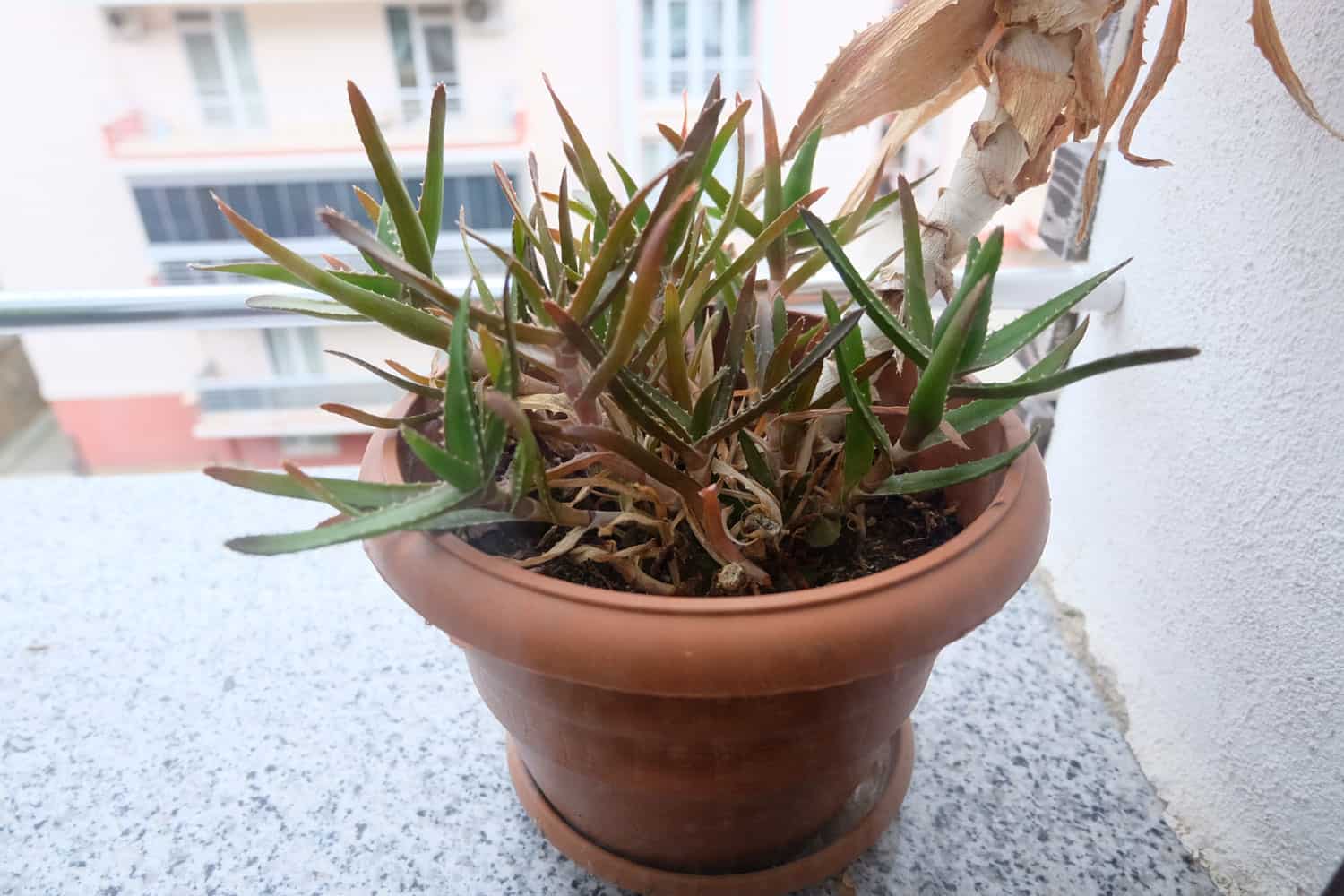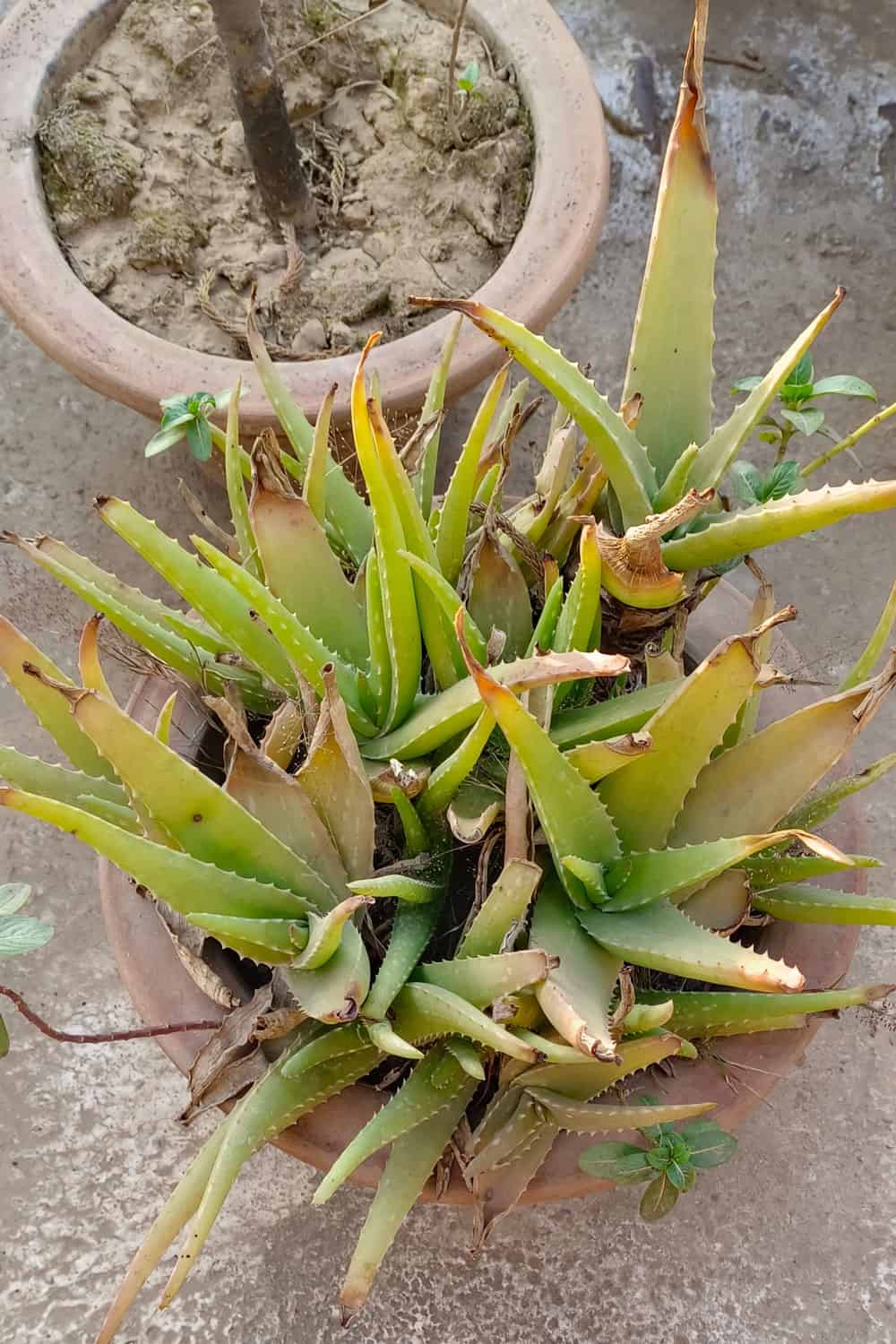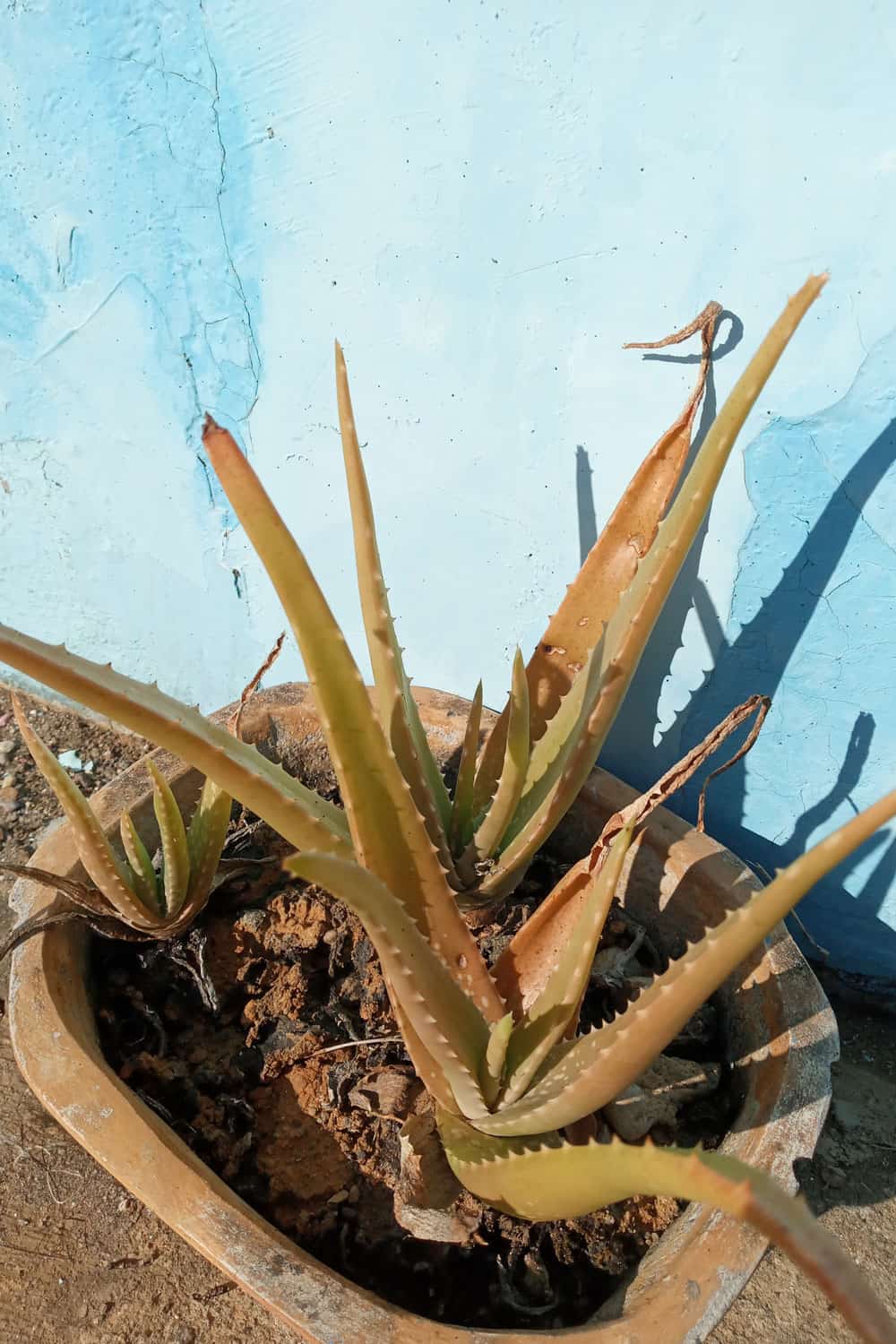Is your aloe vera plant turning brown? No worries, you can fix it!
Brown leaves? It could be from too much or too little water or catching too much light. And watch out for a salt overload from fertilizing.

Get to the root of these issues, follow a few care tips for revival, and you'll soon have your aloe vera looking lush and green! Stick around to discover how.
Understanding Aloe Vera
Aloe vera is a succulent plant native to the Arabian Peninsula but can now be found in many parts of the world.
Aloe vera has several uses, including medicinal and cosmetic applications.

The leaves of the aloe vera plant contain a gel-like substance that is rich in vitamins, minerals, and antioxidants.
This gel can be used topically to soothe burns, cuts, and other irritations. It is also used in many cosmetic products, such as lotions and shampoos.
Common Reasons for Brown Aloe Vera
Aloe veras are easy-going plants. Browning leaves on your aloe vera? It's likely a cry for the right balance of water and light. Let's pinpoint the issue and find a fix:

Overwatering
Overwatering is one of the most common reasons aloe vera plants turn brown. The roots can rot if the soil is too wet, causing the leaves to turn brown.
Underwatering
On the other hand, underwatering can also cause brown aloe vera leaves. When the soil is too dry, the plant cannot absorb enough water, causing the leaves to dry and turn brown.
Too Much Sun Exposure
Aloe vera plants thrive with lots of light, yet direct sun can lead to sunburn and brown leaves.
Ideal spots offer over six hours of indirect sunlight daily—think bright but not blazing. Too little light can make the leaves droop, so aim for a perfectly lit sweet spot.
Cold Damage
Aloe vera plants are sensitive to cold temperatures. If your plant is exposed to cold drafts or below 50°F, the leaves may turn brown and eventually die.
Root Rot
Root rot is caused by overwatering and poor drainage. When the roots are constantly wet, they can rot, causing the leaves to turn brown.
Pests
Pests like mealybugs and spider mites can also cause brown aloe vera leaves. These pests feed on the plant sap, causing the leaves to turn brown and wilt.
How to Revive Your Aloe Vera
If you have noticed that your aloe vera plant is turning brown, don't worry!
There are several ways to revive your plant and return it to good health. Here are some tips to help you get started:
Adjusting Watering Routine
Regularly check the soil moisture level to ensure your plant gets the proper water.
Stick your finger about an inch into the soil - if it feels dry, it's time to water your plant. You can also check the soil moisture level by using a moisture meter.
Hold off on watering for a few days if the soil feels wet or soggy. Use well-draining soil and a pot with drainage holes to prevent water from accumulating at the bottom.
Are you hunting for the ideal pot to nurture your aloe plant? The right choice can make all the difference! Check out our article: What’s The Best Pot For An Aloe Plant?
Changing Sunlight Exposure
Move your plant to a spot with bright, indirect sunlight, and avoid placing it in direct sunlight for extended periods.
If your plant is not getting enough light, consider supplementing with artificial light sources.
Checking Temperature
Keep your plant away from cold drafts or hot, dry air from heating vents or air conditioning units. If necessary, move your plant to a more suitable location.
Inspecting for Diseases
Check the leaves and stems for any signs of damage or discoloration. If you notice any pests, such as mites or mealybugs, remove them with a cotton swab dipped in rubbing alcohol.
If you suspect a disease, consult a gardening expert or take a sample to a plant clinic for diagnosis.
Fertilizing Your Aloe Vera
Finding the best fertilizer goes a long way when nurturing your aloe vera. Opt for a phosphorus-heavy, water-based fertilizer at half-strength, ideally during the spring and summer growth phases.
Avoid over-fertilizing as it can lead to salt buildup, which browns the tips. Use it sparingly—once a year is often enough.
Discover the 7 Best Fertilizers For Aloe Vera in this article! Find out which fertilizers will boost your plant's growth and health, ensuring a vibrant and thriving aloe vera.
Final Thoughts
A brown aloe vera plant is a sign of an underlying issue that needs to be addressed promptly.
Remember to be patient and consistent with your care routine; your aloe vera plant will recover quickly.
So, consider these tips and enjoy your healthy and vibrant aloe vera plant!
